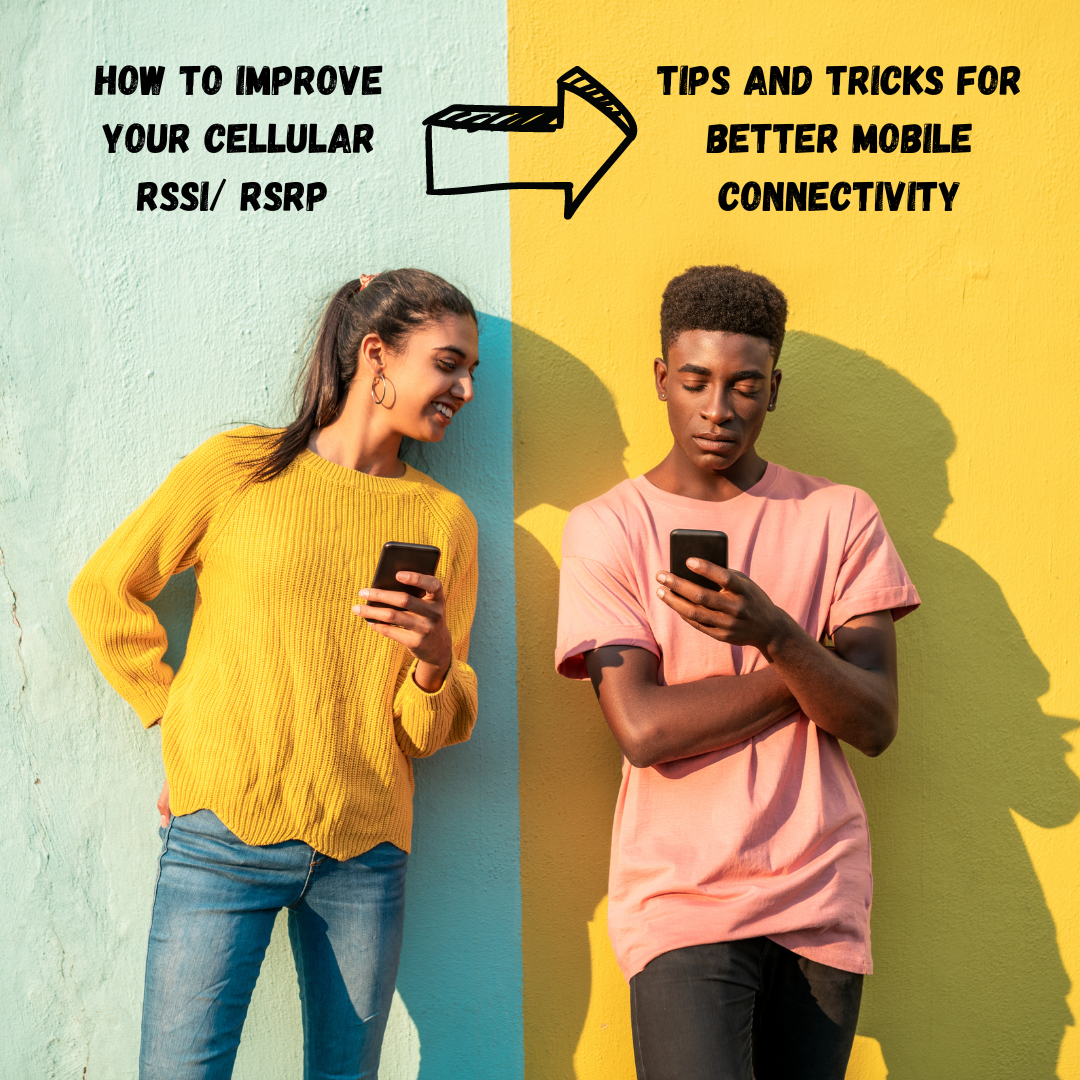
When it comes to cellular data connectivity, good signal strength is crucial. Without a decent signal, you’re not going to get very far. Cellular signal strength and quality can vary greatly depending on your location from a cellular tower, terrain, network overloads, and other factors. Weak cellular coverage can be incredibly frustrating and cause a variety of problems, such as dropped calls, slow internet speeds, and poor call quality. If you live or work in an area with poor cellular coverage, a cellular antenna or a signal booster (also called an amplifier, a cellular booster, or a cellular repeater) may be the solution you need.
In this blog, we’ll discuss the basics of cellular coverage and how to determine a good reference signal received power (RSRP) and/or a good-received signal strength indicator (RSSI). We’ll also share a few tips and tricks about improving your RSRP and RSSI for better cellular connectivity.
First Things First: The Site Survey
It’s important to first determine how much signal you’re currently working with. This will help confirm whether you may benefit from an antenna or a cellular signal booster kit. The method in which you will test your signal strength is called a “site survey.” Instead of looking at your signal bars, a site survey digs into the cellular device’s settings to find its RSSI. Some devices may also have an RSRP value, which is found on LTE and 5G devices.
So, what’s a good RSRP or RSSI signal strength? Both RSSI and RSRP values are displayed as negative numbers. The closer this negative number is to zero, the better the signal strength. If your signal is very weak to begin with, chances are you will need both an antenna and an amplifier. This depends on where (if anywhere) you’re getting a stronger signal. For example, if you’re able to step outside and receive a stronger signal, an antenna should be sufficient. If there’s little to no improvement when you step outside, then a booster system will be necessary.
Cellular Signal Amplifiers/Boosters
A cellular signal amplifier/booster is a device that captures weak cellular signals outside of your building or vehicle, amplifies them, and then rebroadcasts the stronger signal inside. This can greatly improve device coverage in your building or vehicle. You might use a booster if you need to travel outside your current location before you start seeing any signal improvement.
Just like most things, boosters do have their limits. If you experience very weak signals (e.g., between -108dB and -120dB), it will be difficult to determine exactly how much signal improvement you’ll receive. The weaker your starting signal is — meaning where your external antenna is mounted — the less signal rebroadcast coverage area you’ll experience. In some cases, you may need to stay within a few feet of your inside antenna to receive a boosted signal.
Cellular Antennas
A cellular antenna is a device that amplifies the signal received by your cellular device, allowing you to stay connected in areas with weak coverage. These antennas can be installed on your home, office building, or vehicle. They are typically used for connecting a single cellular device with an external antenna port. Amplifier/signal booster kits will also use antennas to receive signals from cell towers, and rebroadcast them to cellular devices.
How a Signal Booster Kit or an Antenna Can Benefit Poor Signals
Both cellular antennas and signal boosters can be great solutions for those who live or work in areas with weak cellular coverage. They can improve call quality, prevent dropped calls, and increase internet speeds, making it easier to stay connected. If you’re experiencing issues with your cellular coverage and your site survey has confirmed a poor cellular signal, consider investing in a cellular antenna or a signal booster. These devices can significantly affect your ability to stay connected and are cost-effective solutions for those living or working in areas with poor coverage.
Amplifier System or Antenna: How to Choose
How do you know which solution is best for you? We suggest verifying where you have the best signal strength and bandwidth speeds. If that location is under 100 feet, then a cellular antenna should be a sufficient solution. In the event that the better signal is over 100 feet away, you will likely need an amplifier.
If you have only one device, go with a direct-connect booster. For more than one device, a repeater kit will be capable of boosting the signal wirelessly to multiple devices at the same time. An important fact to note about antennas is that you will want to keep the cable length to a minimum. This is because the longer the cable, the more signal you will lose.
5Gstore has a variety of cellular antennas and all-in-one amplifier kits from well-respected manufacturers like SureCall, Panorama, weBoost, Wilson, and others. These products are available in many different price points for building, vehicle, or M2M/IoT use. These systems can also be tailored to your specific mounting needs, such as pole mount, magnetic mount on cars or RVs, or wall mount.
Need Help? 5Gstore Can Help!
Still not sure what you need to improve your cellular signals? Have more questions about repeaters and/or antennas? Check out our repeater FAQ page and learn more about how to find a matching antenna on our website.
You can also check in directly with the experts at 5Gstore.com. We’re available Monday through Friday 9:00 a.m. to 6:00 p.m. CST via phone, email, or chat.









